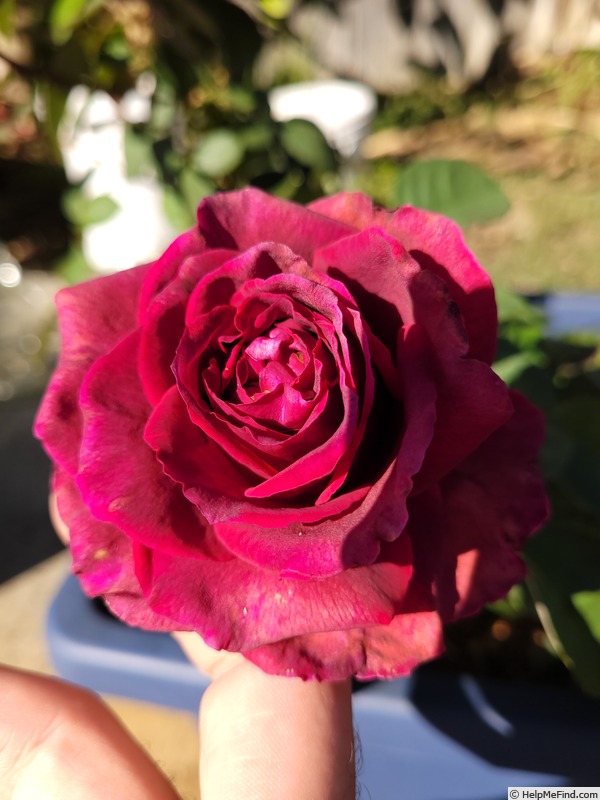|
|
'Brindabella's The Nightbird' rose Description

Photo courtesy of mconvoy
HMF Ratings:
4 favorite votes.
Average rating:
EXCELLENT.
Bloom:
Crimson, dark purple highlights. Buds black opening to darkest red/black with black velvet overlay. Strong, rose fragrance. up to 35 petals. Average diameter 1.5". Small to medium, full (26-40 petals), in small clusters, cupped bloom form. Prolific, continuous (perpetual) bloom throughout the season. Ovoid buds.
Habit:
Medium, compact. Medium, matte, blue-green, maroon highlights foliage. 7 leaflets.
Height: 39" to 47" (100 to 120cm). Width: 39" to 47" (100 to 120cm).
Growing:
Can be used for beds and borders, container rose, garden or landscape. Very hardy. vigorous. Disease susceptibility: very disease resistant, blackspot resistant, very mildew resistant, very rust resistant.
Patents:
United States - Patent No: PP 31,742 on 12 May 2020 VIEW USPTO PATENTApplication No: 16/350,975 on 6 Feb 2019 Inventors: Gray; John Charles (Highfields, AU), Gray; Sylvia Elizabeth (Highfields, AU)
`GRAnib` is a seedling selection which resulted from the controlled cross-pollination of an unnamed Rosa hybrid female breeding line (not patented) and an unnamed Rosa hybrid male breeding line (not patented). .... After many years of trialing, the female parent was confirmed to possess a combination of desirable traits such as excellent disease resistance, a bushy plant growing to 1.2 m tall and wide, and flowers with strong perfume. The male parent was selected for use in breeding after trialing confirmed the presence of a unique, modern flower color. During the summer of 2014, the female parent was emasculated and was manually pollinated with pollen from the male parent.
|